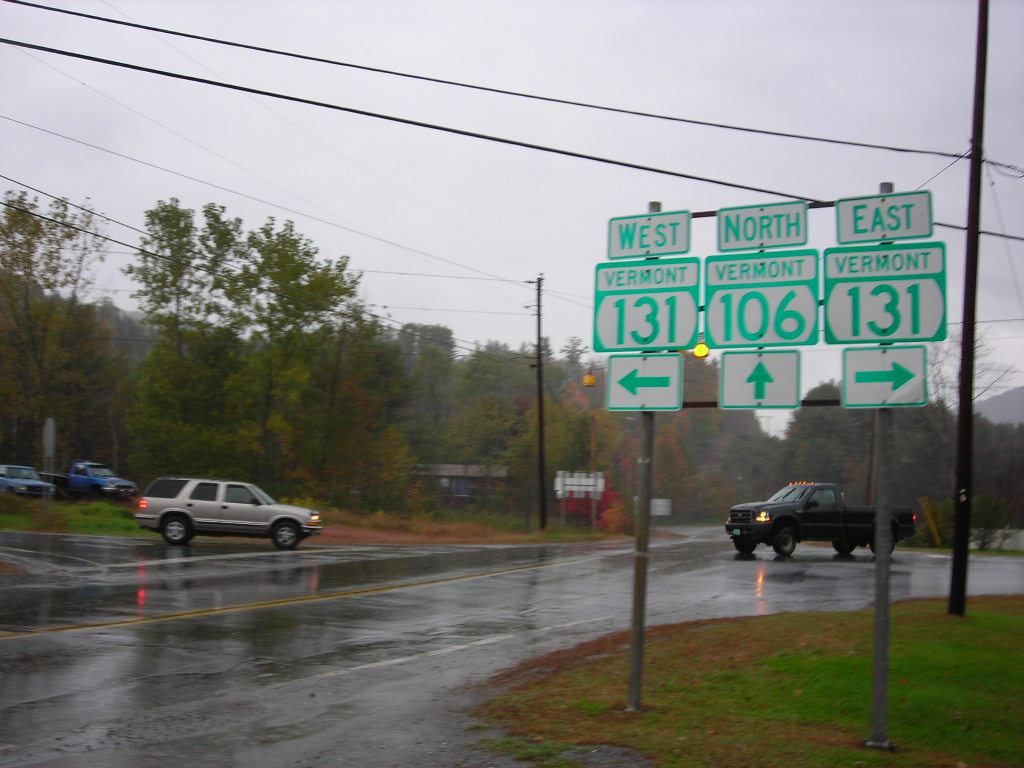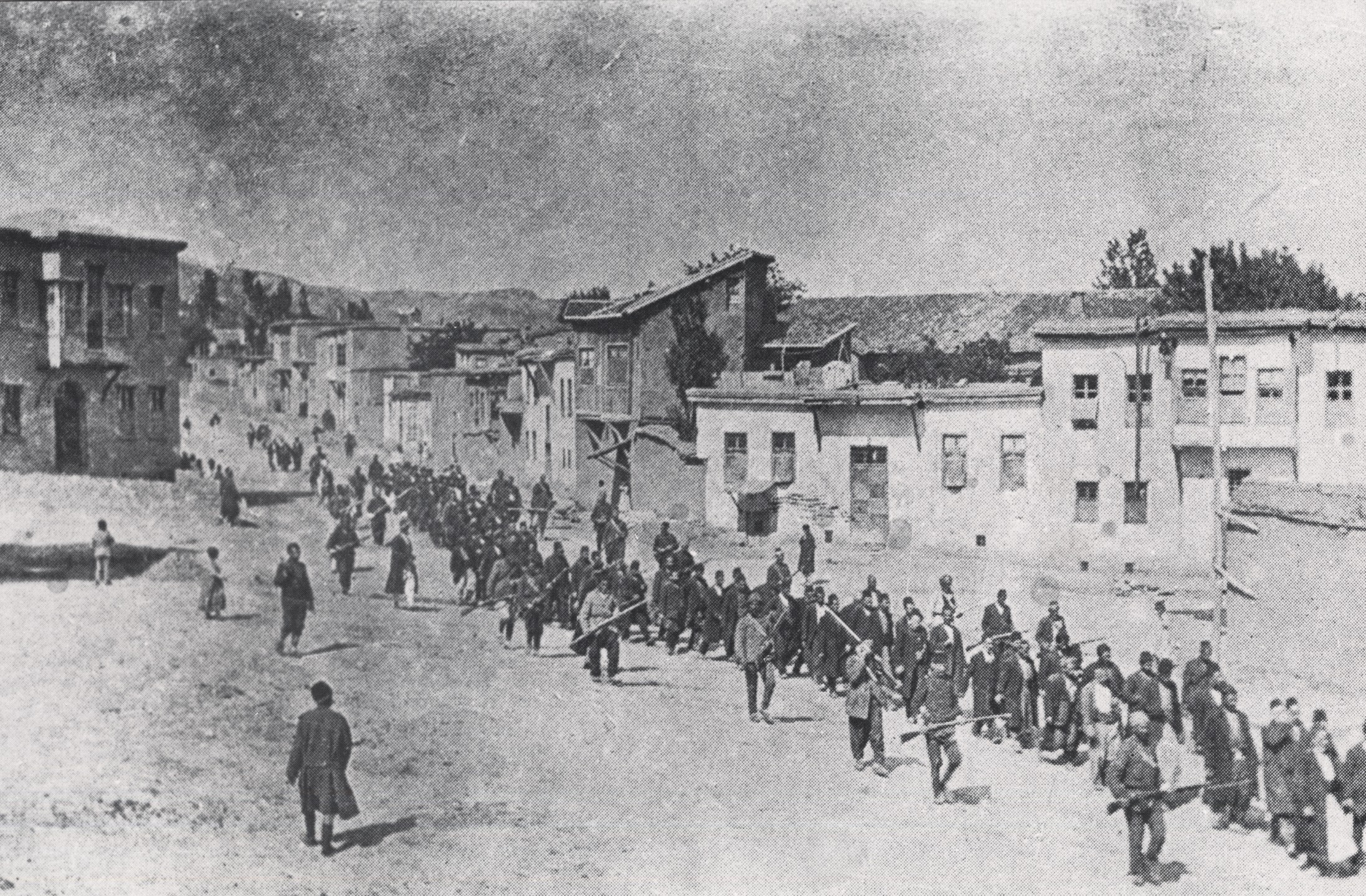|
Indian Stones
The Indian Stones are a pair of historic markers on Vermont Route 106 in Reading, Vermont. Erected in 1799 in commemoration of a 1754 Native American raid, they are the oldest commemorative markers in the state, and among the oldest in the United States. They were mounted in a single granite slab in 1918, and were listed on the National Register of Historic Places in 1974. Description The Indian Stones are located at a small roadside pullout in southern Reading, on the east side of Route 106 at its junction with Knapp Brook Road. A set of three granite steps lead up to a granite slab, in which two slate markers have been mounted. The marker is framed by low bushes, with trees lining the eastern edge of the pullout, and a state commemorative sign placed in the oval created by the pullout. The granite slab is incised with the following in the upper lefthand corner: "- In 1918 - These stones were placed in their / present Position by a Descendant of - Captain / James Johnson"-and ... [...More Info...] [...Related Items...] OR: [Wikipedia] [Google] [Baidu] |
Vermont Route 106
Vermont Route 106 (VT 106) is a north–south state highway in Windsor County, Vermont, United States. The route begins at an intersection with VT 11 in the town of Springfield and runs along the Black River for several miles, crossing through Weathersfield, Reading and Woodstock before reaching the village of Woodstock, where it ends at a junction with U.S. Route 4 (US 4). Route description VT 106 begins at a forked intersection with VT 11 (River Street / Chester Road) in the town of Springfield. VT 106 proceeds northwest as River Street, running along the shores of the Black River, past St. Mary's Oakland Cemetery as a two-lane commercial road. Crossing through an industrial section of Springfield, the route crosses over the Black River, which turns to the northeast near Main Street NS. After crossing the Black River, the River Street moniker is dropped, and the route turns west just south of Hartness State Airport. At the end of ... [...More Info...] [...Related Items...] OR: [Wikipedia] [Google] [Baidu] |
Susannah Willard Johnson
Susannah Willard Johnson (February 20, 1729/30 – November 27, 1810) was an Anglo-American woman who was captured with her family during an Abenaki Indian raid on Charlestown, New Hampshire in August 1754, just after the outbreak of the French and Indian War. Johnson and her family were marched for weeks through the wilderness of New England and Quebec before arriving at the Abenaki village in Saint-François-du-Lac, Quebec. The Johnsons were held for ransom until being sold off into slavery to the French. After her release in 1758, Johnson returned to her home in Charlestown. Beginning in 1796, she recorded a full account of her ordeal. The first edition of her narrative was composed by John Curtis Chamberlain (using information from Johnson's oral testimony and notes) and appeared in small circulation later that year; subsequent editions were revised and edited by Johnson and published in 1807, and posthumously in 1814. Her harrowing memoir, although not the first work in the c ... [...More Info...] [...Related Items...] OR: [Wikipedia] [Google] [Baidu] |
Infrastructure Completed In 1799
Infrastructure is the set of facilities and systems that serve a country, city, or other area, and encompasses the services and facilities necessary for its economy, households and firms to function. Infrastructure is composed of public and private physical structures such as roads, railways, bridges, tunnels, water supply, sewers, electrical grids, and telecommunications (including Internet connectivity and broadband access). In general, infrastructure has been defined as "the physical components of interrelated systems providing commodities and services essential to enable, sustain, or enhance societal living conditions" and maintain the surrounding environment. Especially in light of the massive societal transformations needed to mitigate and adapt to climate change, contemporary infrastructure conversations frequently focus on sustainable development and green infrastructure. Acknowledging this importance, the international community has created policy focused on sustainab ... [...More Info...] [...Related Items...] OR: [Wikipedia] [Google] [Baidu] |
National Register Of Historic Places In Windsor County, Vermont
__NOTOC__ This is a list of the National Register of Historic Places listings in Windsor County, Vermont. This is intended to be a complete list of the properties and districts on the National Register of Historic Places in Windsor County, Vermont, United States. Latitude and longitude coordinates are provided for many National Register properties and districts; these locations may be seen together in a map. There are 132 properties and districts listed on the National Register in the county, including 4 National Historic Landmarks. Current listings See also * List of National Historic Landmarks in Vermont * National Register of Historic Places listings in Vermont References {{Windsor County, Vermont Windsor Windsor may refer to: Places Australia * Windsor, New South Wales ** Municipality of Windsor, a former local government area ... [...More Info...] [...Related Items...] OR: [Wikipedia] [Google] [Baidu] |
Monuments And Memorials On The National Register Of Historic Places In Vermont
A monument is a type of structure that was explicitly created to commemorate a person or event, or which has become relevant to a social group as a part of their remembrance of historic times or cultural heritage, due to its artistic, historical, political, technical or architectural importance. Some of the first monuments were dolmens or menhirs, megalithic constructions built for religious or funerary purposes. Examples of monuments include statues, (war) memorials, historical buildings, archaeological sites, and cultural assets. If there is a public interest in its preservation, a monument can for example be listed as a UNESCO World Heritage Site. Etymology It is believed that the origin of the word "monument" comes from the Greek ''mnemosynon'' and the Latin ''moneo'', ''monere'', which means 'to remind', 'to advise' or 'to warn', however, it is also believed that the word monument originates from an Albanian word 'mani men' which in Albanian language means 'remember ... [...More Info...] [...Related Items...] OR: [Wikipedia] [Google] [Baidu] |
National Register Of Historic Places Listings In Windsor County, Vermont
__NOTOC__ This is a list of the National Register of Historic Places listings in Windsor County, Vermont. This is intended to be a complete list of the properties and districts on the National Register of Historic Places in Windsor County, Vermont, United States. Latitude and longitude coordinates are provided for many National Register properties and districts; these locations may be seen together in a map. There are 132 properties and districts listed on the National Register in the county, including 4 National Historic Landmarks. Current listings See also * List of National Historic Landmarks in Vermont * National Register of Historic Places listings in Vermont References {{Windsor County, Vermont Windsor Windsor may refer to: Places Australia * Windsor, New South Wales ** Municipality of Windsor, a former local government area ... [...More Info...] [...Related Items...] OR: [Wikipedia] [Google] [Baidu] |
Captivity Narrative
Captivity narratives are usually stories of people captured by enemies whom they consider uncivilized, or whose beliefs and customs they oppose. The best-known captivity narratives in North America are those concerning Europeans and Americans taken as captives and held by the indigenous peoples of North America. These narratives have had an enduring place in literature, history, ethnography, and the study of Native peoples. They were preceded, among English-speaking peoples, by publication of captivity narratives related to English people taken captive and held by Barbary pirates, or sold for ransom or slavery. Others were taken captive in the Middle East. These accounts established some of the major elements of the form, often putting it within a religious framework, and crediting God or Providence for gaining freedom or salvation. Following the North American experience, additional accounts were written after British people were captured during exploration and settlement in In ... [...More Info...] [...Related Items...] OR: [Wikipedia] [Google] [Baidu] |
Montreal
Montreal ( ; officially Montréal, ) is the List of the largest municipalities in Canada by population, second-most populous city in Canada and List of towns in Quebec, most populous city in the Provinces and territories of Canada, Canadian province of Quebec. Founded in 1642 as ''Fort Ville-Marie, Ville-Marie'', or "City of Mary", it is named after Mount Royal, the triple-peaked hill around which the early city of Ville-Marie is built. The city is centred on the Island of Montreal, which obtained its name from the same origin as the city, and a few much smaller peripheral islands, the largest of which is Île Bizard. The city is east of the national capital Ottawa, and southwest of the provincial capital, Quebec City. As of 2021, the city had a population of 1,762,949, and a Census Metropolitan Area#Census metropolitan areas, metropolitan population of 4,291,732, making it the List of the largest municipalities in Canada by population, second-largest city, and List of cen ... [...More Info...] [...Related Items...] OR: [Wikipedia] [Google] [Baidu] |
Forced March (war Crime)
A death march is a forced march of prisoners of war or other captives or deportees in which individuals are left to die along the way. It is distinguished in this way from simple prisoner transport via foot march. Article 19 of the Geneva Convention requires that prisoners must be moved away from a danger zone such as an advancing front line, to a place that may be considered more secure. It is not required to evacuate prisoners that are too unwell or injured to move. In times of war such evacuations can be difficult to carry out. Death marches usually feature harsh physical labor and abuse, neglect of prisoner injury and illness, deliberate starvation Starvation is a severe deficiency in caloric energy intake, below the level needed to maintain an organism's life. It is the most extreme form of malnutrition. In humans, prolonged starvation can cause permanent organ damage and eventually, dea ... and dehydration, humiliation, torture, and execution of those unable to keep u ... [...More Info...] [...Related Items...] OR: [Wikipedia] [Google] [Baidu] |

.jpg)




